
Date: 2025-12-13 Page is: DBtxt003.php txt00012934
Food
Wellness
The secret to cooking amazing vegetables
Burgess COMMENTARY
Peter Burgess
The secret to cooking amazing vegetables
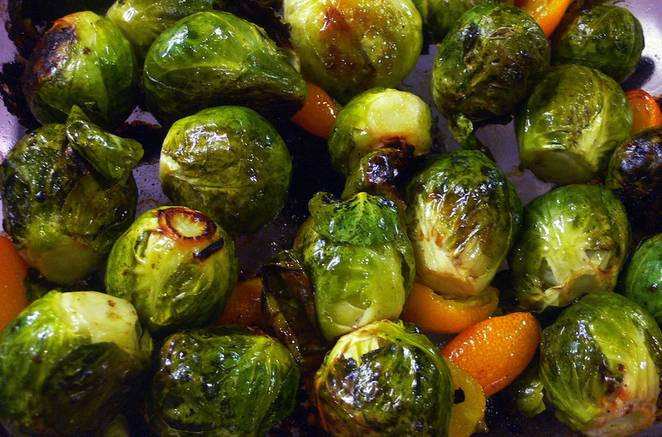
CC BY 2.0 Kelly Sue DeConnick -- Brussels sprouts roasted with kumquats
Clue: It has to do with another food group.
Once in a while I encounter some cooking advice that makes a light bulb go off in my head. In this case, it was a headline on Mark Bittman’s cooking blog: “Treat Your Veggies Like Meat.” Writer Emily Stephenson describes dining at a friend’s house, eating deliciously crispy roasted vegetables. When she asks her friend how it’s done, the friend replies: “I’ve never understood why people don’t treat vegetables like meat.”
It’s a brilliant revelation. Why don’t we? Meat eaters, for example, would never put a steak in a lukewarm pan or in a steam basket over a pot of simmering water. There’s a reason why cooks take time to brown stewing beef meticulously before braising. Doing this creates a glorious brown crust and an explosion of flavor.
“A nice, browned, crisp sear is one of the best parts of eating meat, vegetables, bread, and pretty much anything else. This browning is known as the Maillard reaction that happens between amino acids and sugar as they are heated… The important thing to know is that browning and caramelization—the process that forms a crust—is what makes cooked food taste great.”
Vegetables are no different. They respond wonderfully to heat. They can develop charred edges, caramelized sides, mouthwatering sweetness, and a perfect softly crunchy texture. And yet, many home cooks either ignore this knowledge or are unaware of it.
There’s almost no limit to what can be roasted at high heat and transformed into a sublime version of its everyday self. Take cabbage, for example. When I get a big head from my CSA share, it takes weeks to get through if I make coleslaw. But if I chop it into chunks, toss with oil and salt, and roast at 450 F, it turns into a golden, sweet treat that I can’t stop snacking on. (It also shrinks down considerably, which helps me get through it faster.)
Broccoli, cauliflower, kale, spinach, green beans, tomatoes, rapini, scallions, bok choy, zucchini – these aren’t the usual veggies that come to mind when you think of roasting, but they’re all excellent in roasted form. Take Stephenson’s advice and preheat your pans in the oven while prepping the vegetables. You should hear a sizzle when you toss them in, coated in oil and seasonings. That’s a good sign. That’s where the magic happens.
Related on TreeHugger.com:
8 fruits and vegetables you should be roasting whole
Weekday Vegetarian: Roasted Cauliflower Soup with Aged Cheddar
8 fruits and vegetables you should be roasting whole
Melissa Breyer
Melissa Breyer (@MelissaBreyer)
Living / Easy Vegetarian Recipes
October 20, 2016
Share on Facebook
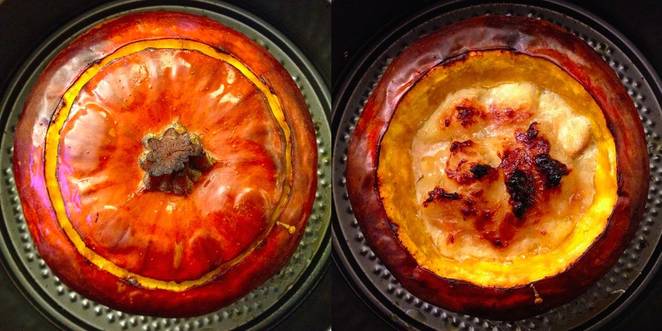
Whole pumpkin CC BY 2.0 Joy/flickr
There is something magical that happens when a fruit or vegetable is cooked whole. The flavors often lost to peeling, chopping, seeding and so on are instead invited to stay at the party and the whole shebang mingles under the heat to glorious ends. With foods you may be eating raw, roasting can sweeten and intensify the flavors; for foods you might normally cook anyway, cooking them whole makes for a rich toothsome texture and a lovely presentation as well. Plus, the absence of prep work makes these all exponentially easy and cooking whole can increase nutrients and reduce food waste by making otherwise discarded parts taste delicious. Consider the following.
Grapes

Roasted grapes
Kitchen Life of a Navy Wife/CC BY 2.0
What? Yes! Roasted grapes are a revelation. Flavor is intensified and texture is concentrated and they are delicious in both savory and sweet dishes; serve them with cheese or salty things or over Greek yogurt or on top of baked goods. Use them as you would a fruit preserves.
The method couldn't be easier: Heat oven to 425F, spread grapes in a single layer on a pan, add a little olive or almond oil, sprinkle with salt or sugar, toss. Cook for just under 10 minutes, until they start to caramelize a bit and the skin begins to split.
Cherries
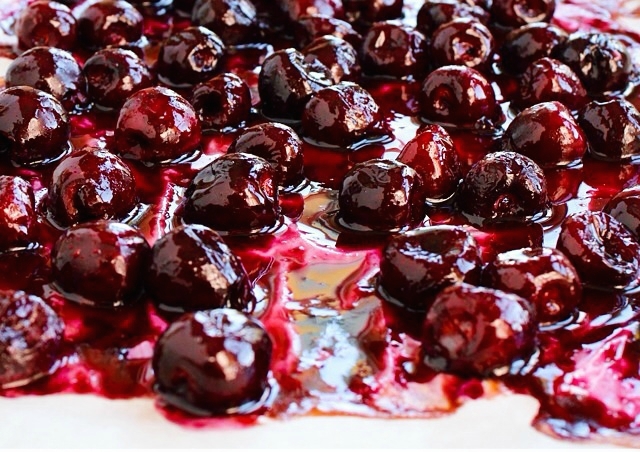
Roasted cherries Buttercream Blondie/Video screen capture
Oh gosh, roasted cherries, these are the best. They are plump and busting with deep mellow cherry flavor; and roasting them with their pit gives them an almond-y edge. Some of the juice releases and makes a syrup of sorts, and the whole thing is just beautiful! Serve them over ice cream, with yogurt, on pancakes, in place of cranberries on Thanksgiving, in wintry cocktails, with cheese, on cheesecake, or, basically, with anything.
Preheat oven to 450F. Use big full cherries, wash them, sprinkle sugar on them, add a pinch of salt and spread them on a baking sheet. Roast for around 10 minutes until they start to release their juices and caramelize, but don't let the sugar burn. Add a healthy splash of brandy (or fruit juice if you prefer) and cook for another 5 minutes. Let cool a bit before serving, or allow to cool completely and refrigerate. (You can remove the pits, or warn any guests that they should. Nobody wants to lose a tooth.)
Apples
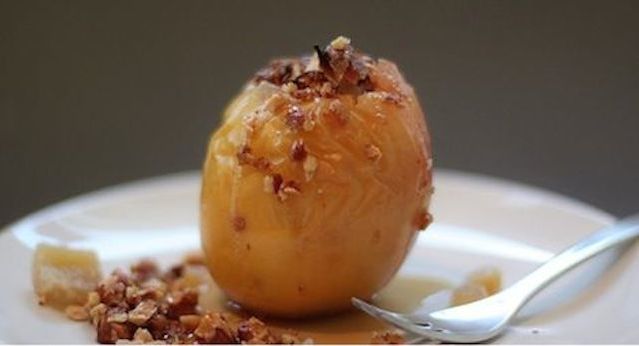
Baked apples © Jaymi Heimbuch
Chances are you've had baked apples before, they're not exactly innovative, but they are wonderful and often overlooked in place of showier desserts, which is a shame. There are so many ways to bake apples, and there are any number of recipes that involve whole apples and pastry dough or puff pastry, so delicious. But we especially love this tried and true recipe, the result of which is pictured above: Baked Apple Stuffed with Candied Ginger and Almonds.
Tomatoes

Roasted tomatoes © Magdanatka
So, in the cooked whole tomatoes department there are the traditional whole stuffed tomatoes, which are good, but never really sparked the wow factor over here. But quickly roasting whole cherry or vine tomatoes is a bit different. They're like the gateway fruit to sun-dried tomatoes (if one needed coaxing). They retain much of their juices, but they become both sweeter and more savory, and their texture takes well to a bit of heat.
The how-to couldn't be easier. Heat the oven to 400F, place washed whole tomatoes on a pan, drizzle them with olive oil and salt and pepper, roast until they begin to collapse. Voila.
Pumpkin
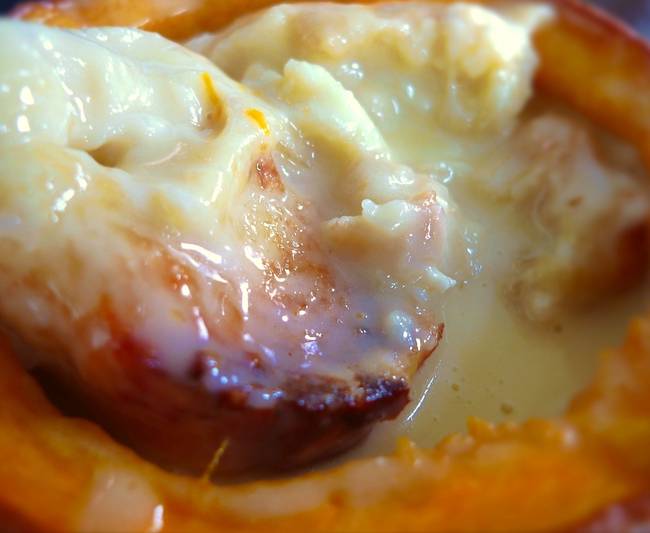
Baked Pumpkin Fondue © Jerry James Stone via Flickr
Katherine writes about how to eat a whole pumpkin here. I refer to Stuffed Pumpkin with Quinoa, Butternut and Cranberries here. And Jerry gives a recipe for a whole baked pumpkin fondue ... pumpkin fondue ... here. That's it, pictured above. It has wine and Brie and baguette in it. It's decadent, but there you go.
Cauliflower
Roasting a whole cauliflower is a thing of beauty. For those of us who don't partake in food that used to once roam the fields, a whole roasted cauliflower is like an event; it's a big roast that can do a fine stand-in for a platter of roasted meat. The New York Times video above gives a great how-to.
Eggplant

Whole eggplant © Fanfo
There are many many ways to cook an eggplant. There are even many many ways to roast an eggplant. But the method recommended by the kitchn is not only the simplest, but the tastiest. Basically, rinse an eggplant, dry it and stick it directly on the middle rack (with a baking pan beneath for wayward drips) of an oven preheated to 350F. Cook for 45 minutes to an hour, until wrinkled and super tender.
This yields an interior of velvety dense smooth flesh that can be topped with sauce (like above, just cut in half first) or scooped and used for dips, spreads, sauces, soups, etc.
Garlic
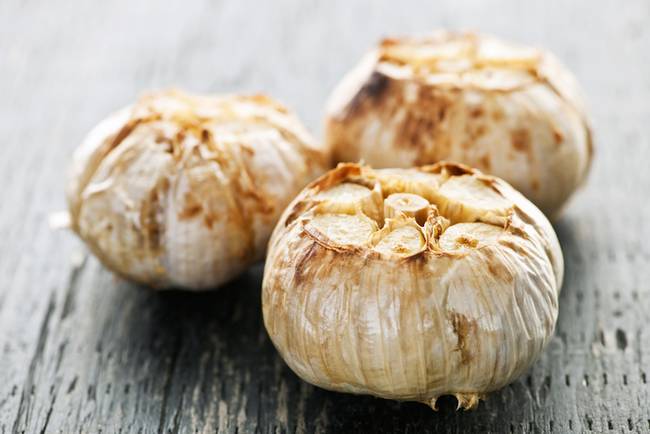
Roasted garlic © Elena Elisseeva
There was a time in the 1980s when roasting a whole bulb of garlic was what all the cool proto-foodies did. Nobody seems to do it anymore, but it's so good. It turns otherwise spicy and intense garlic into a much mellower animal with a sweetly savory depth. And it makes it creamy, perfect for adding to mashed potatoes or simply spreading on baguette; great anywhere you'd put garlic, but don't want that overwhelming garlic power. To roast a whole bulb, remove any loose papery skin, cut just the top off, rub a teaspoon of olive oil all over the bulb, wrap in foil, and bake at 400F for 30 minutes or so, until it feels soft.